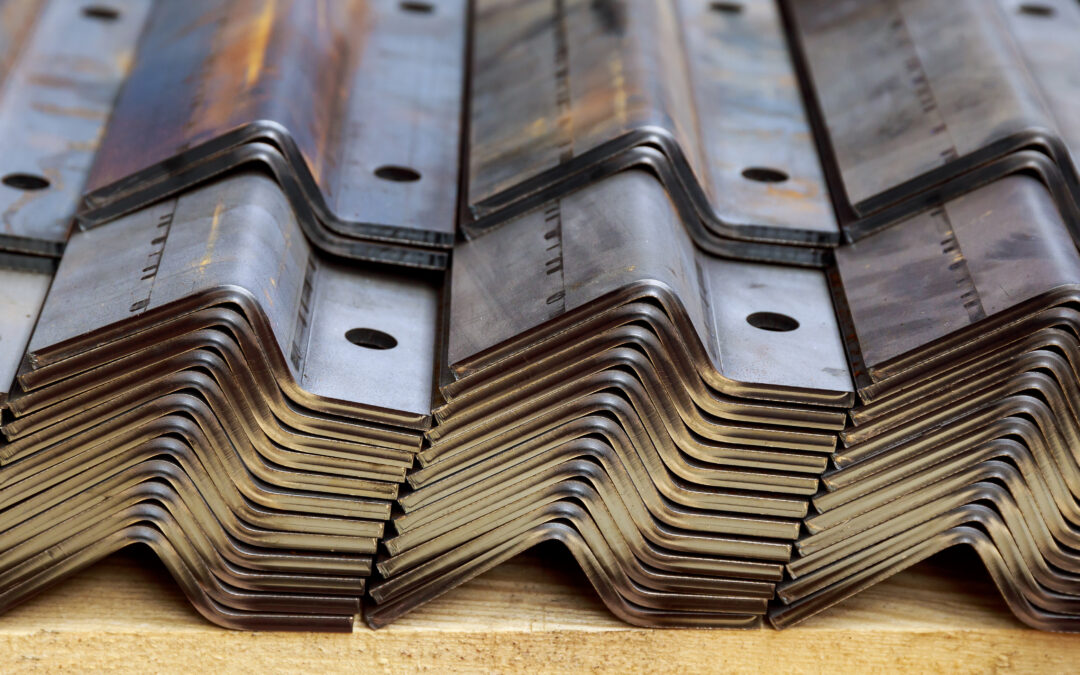Sheet metal fabrication is a process of forming and cutting metals into various shapes, typically for industrial applications.
It involves the use of specialized equipment to cut, bend, roll, form and assemble sheet metal parts from different materials such as aluminum, steel or stainless steel.
Through this process, intricate three-dimensional components can be created with precise measurements that meet strict industry standards.
Sheet metal fabrication is an important component in many manufacturing processes.
It allows manufacturers to create complex parts quickly and efficiently without compromising quality.
The ability to produce custom components that are suited for specific applications makes it a highly advantageous option for production lines across numerous industries.
Definition Of Sheet Metal Fabrication
Sheet metal fabrication is the process of using sheet material to create components and products. It involves cutting, forming, punching, and welding techniques on a wide range of materials such as steel, aluminum, brass, copper, or stainless steel.
The primary benefit of this manufacturing method is its cost-effectiveness; it requires minimal tooling and equipment for large production runs. Additionally, sheet metal fabrication typically has less environmental impact than other processes due to reduced waste generated during production.
As an added bonus, this process also allows for quick prototyping at low costs which speeds up product development cycles. Sheet metal fabrication provides an efficient solution for many businesses in need of cost-effective yet high quality products that can meet their specific requirements.
Benefits Of Sheet Metal Fabrication
Sheet metal fabrication is a process of forming, cutting and assembling components from sheet metal. This method of manufacturing offers several benefits over traditional methods, including consistent finish quality, cost savings and time efficiency.
The high level of accuracy achievable with modern CNC machines results in precise cut parts that require little to no additional finishing processes. This increases the overall finish quality while reducing labor costs associated with secondary operations such as grinding and polishing.
Additionally, because fewer steps are required during production, lead times for fabricated parts can be significantly shorter than those using other manufacturing techniques.
When compared to other materials used for mass production, sheet metal is generally more economical due to its relatively low price per pound or meter. In addition, scrap material produced during fabrication can often be recycled back into the manufacturing process resulting in further cost savings.
For most production runs, it’s possible to achieve significant economic gains by leveraging these properties of sheet metal fabrication.
In summary, sheet metal fabrication provides manufacturers with an effective solution for producing large volumes of precision-cut components quickly and affordably. By taking advantage of the inherent qualities of this versatile material combined with modern machine tools, manufacturers can realize substantial improvements in product quality while decreasing their operating expenses.
Techniques Used In Sheet Metal Fabrication
Sheet metal fabrication is the process of transforming flat sheet metal into components or structures with a desired shape and size. This can be achieved through various processes such as the following:
Cold forming is a process where metal sheets are bent along an axis to form complex shapes that require intricate details.
Punching presses are used to punch holes in thin sheets of material at high speed for precise dimensions without creating any burrs on the surface.
Bending allows for more complicated geometries to be created from sheet metals by using dies which provide guidance on how much bend should be given in each area. Lastly, welding is commonly used when joining two pieces together due to its stronger bond compared to other methods of joining materials such as mechanical fasteners or adhesives.
Cold rolling is the process of creating a flat surface on the metal by passing it between two rollers with varying forces applied to them. This technique helps shape the metal into its desired form while maintaining consistency in thickness across all areas of the material.
Laser cutting utilizes an intense beam of light to cut through the metal at specific points, creating intricate designs or precise cuts with minimal effort.
Hydroforming uses high-pressure hydraulic fluids to pressurize and mold sheets of metals into predetermined shapes without distorting their structure.
Sheet metal fabrication plays an important role in manufacturing since it enables designers and engineers to bring their ideas into reality quickly and cost-effectively while producing quality parts that meet customer requirements.
The FVSC Advantage
Sheet metal fabrication is an essential part of the manufacturing process, providing a cost-effective solution to create complex components. Without sheet metal fabrication, it would be near impossible for manufacturers to produce products with precision and speed.
Fox Valley Stamping Company offers in-house sheet metal fabrication and welding services that provide a variety of benefits to customers, including improved workflow and quality, faster delivery, and lower costs. Our in-house team delivers high-quality work and unmatched efficiency, which all of our customers value highly. We use precision results, top-of-the-line equipment, cost-effectiveness, and swift project management to achieve this. Trust us with your sheet metal fabrication and welding needs and discover the excellence that sets us apart. Contact us today!




 847.741.2277
847.741.2277
